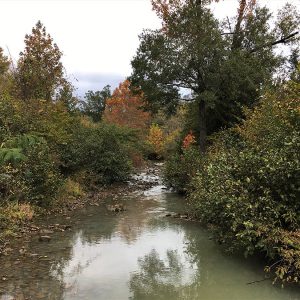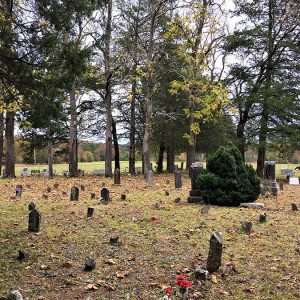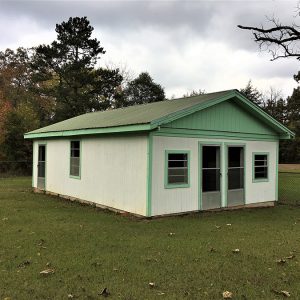calsfoundation@cals.org
Beauchamp (Scott County)
Beauchamp is an unincorporated community located in southwestern Scott County. Named for the family who settled in the area, Beauchamp was established in 1901 along Black Fork Creek three miles west of Blansett (Scott County). The agricultural and timber industries have contributed to the economy and way of life in Beauchamp.
Prior to European exploration, the area surrounding Beauchamp was an explored wilderness. Several species of wildlife that no longer inhabit the area, such as elk and buffalo, were present throughout the region. Numerous archaeological sites and burial mounds are located along the banks of prominent waterways such as the Fourche La Fave River. Archaeological findings have provided evidence of early inhabitants dating to the Archaic, Woodland, and Mississippian periods. Further archaeological evidence has indicated that the people of the Caddo tribe later inhabited the area.
During the late seventeenth and early eighteenth centuries, French hunters and tradesmen traveled west from the Arkansas Post exploring portions of western Arkansas. These Frenchmen often traversed rivers and streams throughout the region. Several rivers that flow through Scott County were likely named by these explorers, including the Petit Jean, Poteau, and Fourche La Fave. It is probable that the explorers traveled along the Fourche La Fave River or Black Fork Creek near present-day Beauchamp.
Settlers began arriving in the area now known as Beauchamp during the late 1860s and early 1870s. The area was settled throughout the early twentieth century.
Men called to fight in the Civil War served with both the Confederacy and Union. The women, children, and elderly were left to look after family homes and farms. Bushwhackers often stole crops and food from homes in the area.
Walnut Grove Cemetery, which is located in Beauchamp, was established circa 1862. The oldest known grave in the cemetery reportedly belongs to Harry Long, a Confederate soldier who died in 1862.
In May 1882, the Scott County Courthouse burned, destroying all records that defined the boundaries of the various school districts that had been established throughout the county. In August, the county court reestablished the boundaries of the fifty-six school districts active in the county, including Beauchamp School District (Number 55). Beauchamp School District was also known as Kersey.
European immigrants from Germany, Switzerland, and Denmark moved to Beauchamp and the surrounding area in the late nineteenth and early twentieth centuries. The Deela family emigrated from Denmark in the early twentieth century, the Flinsbaugh family from Germany in the late nineteenth century, and the Hauert family from Switzerland and Germany in the late nineteenth century.
The Beauchamp Post Office was established in 1901, with Charles Hinsdale as the first postmaster. Beauchamp’s post office was discontinued in November 1940 and the mail sent to Black Fork (Scott County). The Beauchamp School District was consolidated with the Waldron School District sometime between 1949 and 1953.
Walnut Grove Cemetery continues to be cared for and used by residents in the twenty-first century. There is also a small chapel located in the cemetery. Agriculture and timber continue to be important to the area. Beauchamp is located approximately three miles from Lake Hinkle, which is a popular area for recreation.
For additional information:
Cate, Michael. History of Scott County, Arkansas. Dallas, TX: Curtis Media Corporation, 1991.
Echoes: The Scott County Historical and Genealogical Society Quarterly. Waldron, AR: Scott County Historical and Genealogical Society (1986–).
Goodner, Charles. Scott County in Retrospect. Mansfield, AR: Frank Boyd, 1976.
Goodner, Norman. A History of Scott County, Arkansas. Siloam Springs, AR: Bar D Press, 1941.
McCutcheon, Henry Grady. History of Scott County, Arkansas. Little Rock: H. G. Pugh and Company, 1922.
Ty Richardson
Richardson Preservation Consulting
 Black Fork Creek
Black Fork Creek  Scott County Map
Scott County Map  Walnut Grove Cemetery
Walnut Grove Cemetery  Walnut Grove Chapel
Walnut Grove Chapel 



Comments
No comments on this entry yet.